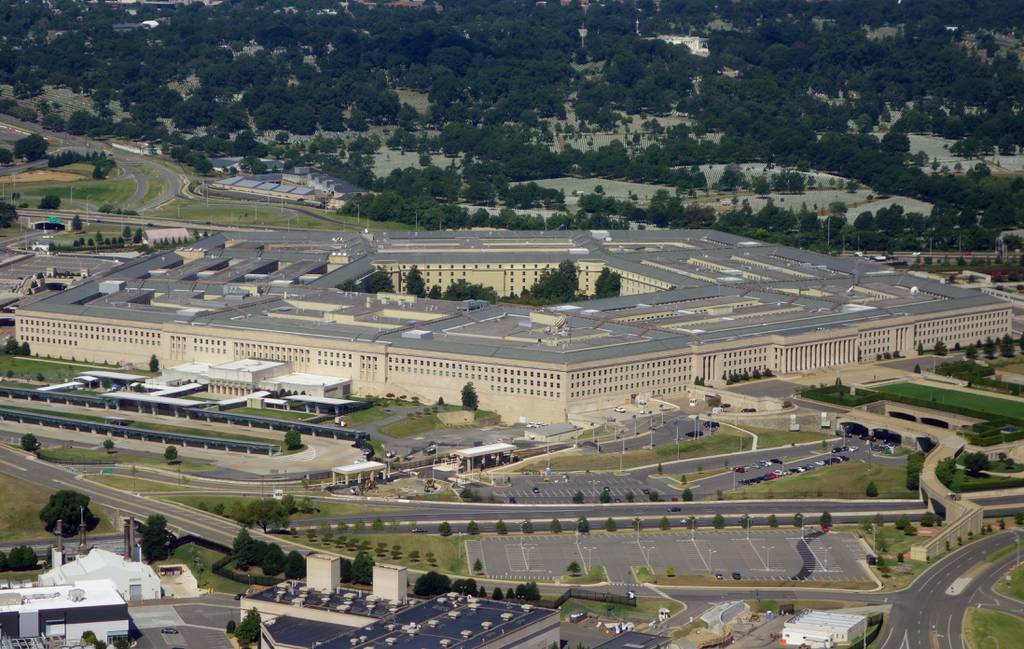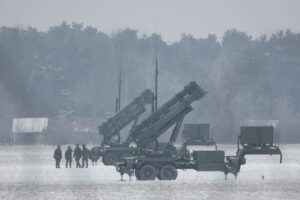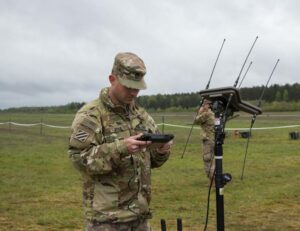
Having a strong and resilient U.S. defense industrial base is a key part of our national security strategy, acting as a deterrent.
If our adversaries understand we have the capability and capacity to produce enough weapons systems to enter a conflict and win, they will be less likely to want to engage and more likely to seek a diplomatic solution.
But as we’ve seen with supply chain issues caused by the COVID-19 pandemic and industrial base constraints that have limited the U.S. and allied ability to support Ukraine (and foreign military sales to Taiwan), the U.S. is not ready for a conflict with a peer adversary.
This is a national crisis that will take an all hands on deck effort to resolve. But it’s not clear the sense of urgency is strong enough. Are we truly ready?
The highly anticipated U.S. National Defense Industrial Strategy was released this month by the Department of Defense’s Office of Industrial Base Policy. This document provides a comprehensive outline of the issues in the defense industrial base and details the myriad approaches that must be taken to resolve them.
But most of what is in the NDIS is not entirely new. This is not intended as a criticism — the DoD has been tracking and reporting on industrial base issues and the means to mitigate those issues for many years. It sends industrial capabilities reports to Congress annually and produced large reports in 2018 and 2022 on the strength of the defense industrial base.
However, the NDIS provides a singular place to find this information. And it seems to have attracted the attention of a much wider audience than previous reports. At this point, it appears most policymakers and intellectuals recognize it’s important to revitalize U.S. manufacturing and that the defense industrial base is a key part of national security.
The implementation plan for the NDIS is scheduled to be released at the end of March, but it is already obvious many hard decisions will need to be made to successfully implement this strategy. Most of the solutions will require multiple people, organizations, and resources working in tandem — and many of them are not within DoD’s control.
The IBP office has been attempting to address these issues and improve the resilience of the industrial base for years, but they cannot do it alone. And although other parts of DoD, and even other parts of the government and industry, have been talking about supply chain security and resilience as well, there has never been a concerted, sustained effort, where everyone considers this a top priority.
The DoD plays a very large role here of course, especially with regards to how it sets requirements, purchases systems, and makes investments in technologies and in the industrial base. Congress plays another large role by ensuring steady, on-time procurement funding, and funding to mitigate industrial base issues. Industry plays a role in developing and using innovative technology and flexible and agile manufacturing processes that improve efficiency and increase resiliency.
The interagency too plays a part by helping with trade remedies and foreign investment controls, workforce development and labor regulations, and enabling international collaboration. And our international partners must help co-develop and co-produce systems and provide capability the U.S. can leverage to mitigate industrial base and innovation gaps.
It remains to be seen if these at times competing forces can rally around this call to action and take the steps necessary to rescue our industrial base in time.
Christine Michienzi was chief technology officer in the Defense Department’s Industrial Base Policy shop and senior adviser to the undersecretary for acquisition and sustainment.
- SEO Powered Content & PR Distribution. Get Amplified Today.
- PlatoData.Network Vertical Generative Ai. Empower Yourself. Access Here.
- PlatoAiStream. Web3 Intelligence. Knowledge Amplified. Access Here.
- PlatoESG. Carbon, CleanTech, Energy, Environment, Solar, Waste Management. Access Here.
- PlatoHealth. Biotech and Clinical Trials Intelligence. Access Here.
- Source: https://www.defensenews.com/opinion/2024/01/29/implementing-the-industrial-base-strategy-wont-be-easy/
- :has
- :is
- :not
- :where
- 2018
- 2022
- 70
- a
- ability
- About
- acquisition
- acting
- Action
- address
- adviser
- agile
- All
- alone
- already
- Although
- an
- and
- Annually
- Another
- Anticipated
- appears
- approaches
- ARE
- around
- AS
- At
- attempting
- attention
- attracted
- audience
- base
- BE
- been
- but
- by
- call
- call to action
- CAN
- cannot
- capabilities
- capability
- Capacity
- caused
- chain
- chief
- chief technology officer
- clear
- collaboration
- competing
- comprehensive
- concerted
- conflict
- Congress
- considers
- constraints
- control
- controls
- course
- COVID-19
- COVID-19 pandemic
- crisis
- criticism
- decisions
- deck
- Defense
- Department
- details
- deterrent
- developing
- Development
- do
- document
- DoD
- easy
- efficiency
- effort
- enabling
- end
- engage
- enough
- ensuring
- Enter
- entirely
- especially
- Even
- everyone
- Find
- flexible
- For
- Forces
- foreign
- foreign investment
- funding
- gaps
- Government
- Hands
- Hard
- Have
- help
- helping
- here
- highly
- How
- HTTPS
- if
- images
- implement
- implementation
- implementing
- important
- improve
- in
- Increase
- industrial
- industry
- information
- Innovation
- innovative
- innovative technology
- intended
- International
- investment
- Investments
- issues
- IT
- jpg
- Key
- labor
- large
- less
- Leverage
- likely
- Limited
- made
- MAKES
- manufacturing
- many
- March
- means
- Military
- Mitigate
- Month
- more
- most
- much
- multiple
- must
- myriad
- National
- national security
- necessary
- Need
- never
- New
- obvious
- of
- Office
- Officer
- on
- organizations
- Other
- our
- outline
- pandemic
- part
- partners
- parts
- peer
- People
- Place
- plan
- plato
- Plato Data Intelligence
- PlatoData
- plays
- Point
- policy
- policymakers
- previous
- priority
- processes
- procurement
- produce
- Produced
- provide
- provides
- purchases
- rally
- ready
- recognize
- regards
- regulations
- released
- remains
- Reporting
- Reports
- require
- Requirements
- rescue
- resilience
- resilient
- resolve
- Resources
- Role
- s
- sales
- scheduled
- security
- Seek
- seems
- seen
- sends
- senior
- sense
- Sense of Urgency
- Sets
- Shop
- singular
- solution
- Solutions
- steady
- Steps
- Strategy
- strength
- strong
- Successfully
- supply
- supply chain
- support
- sustained
- Systems
- Taiwan
- Take
- taken
- talking
- Tandem
- Technologies
- Technology
- than
- that
- The
- Them
- There.
- These
- they
- this
- those
- time
- times
- to
- too
- top
- Tracking
- trade
- truly
- u.s.
- Ukraine
- understand
- urgency
- using
- very
- want
- was
- we
- Weapons
- WELL
- What
- What is
- wider
- will
- win
- with
- within
- Workforce
- Workforce Development
- working
- years
- zephyrnet












